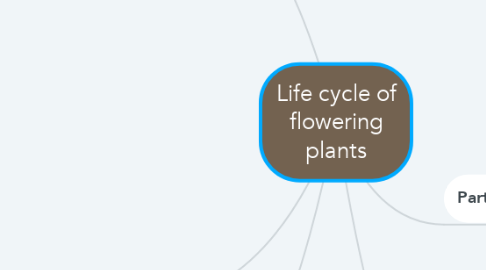
1. Fertilsation
1.1. Pollen tube, gametes, ovules, embryo, fruit or pod
1.1.1. Gametes- males. Ovules - female
1.1.2. Fruit or pod protects the seed.
2. Seed dispersal
2.1. Wind, Water, animal
2.1.1. Animals pass seeds along via digestion, some seeds catch a ride on the wind. Some seeds can float and move via streams, rivers and tides.
2.2. Dispersion increases success of growth by reducing competition.
3. Germination
3.1. Healthy soil, warm temperature, water
3.1.1. Synthesize
3.1.1.1. How Warm is Warm Enough? The answer to this depends on what type of seeds you are trying to germinate and/or what type of plants you are trying to grow. Most cool season vegetable crops will germinate when soil temperatures reach the mid-40's to mid 50's. They grow best when in daytime air temperatures of between 60-80 degrees F. Warm season vegetables crops prefer soil temperatures in the mid 50's to mid 60's for germination and need summer-like air temperatures (70-95 degrees F) to achieve optimal growth. - The Importance of Soil Temperature to Growing Plants
4. Parts of the flower
4.1. Petal, stigma, style, pistol, ovary, pedicel, sepal, anther, filament, stamen.
4.1.1. Example/extend
4.1.1.1. https://images.search.yahoo.com/yhs/search?p=Parts+of+a+flower&fr=yhs-sz-001&hspart=sz&hsimp=yhs-001&imgurl=http%3A%2F%2Froses4az-mevrs.org%2Fwp-content%2Fuploads%2Fparts-of-a-flower.png#id=1&iurl=http%3A%2F%2Froses4az-mevrs.org%2Fwp-content%2Fuploads%2Fparts-of-a-flower.png&action=click
5. Pollination
5.1. Insects and wind
5.1.1. Example
5.1.1.1. What is Pollination?
